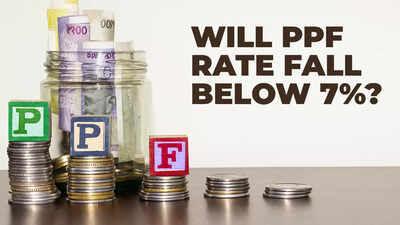Will PPF rate fall below 7%? Sustained decline in government bond yields could take Public Provident Fund rate to a 50-year low; here’s why

For the first time in decades, the Public Provident Fund (PPF) rate could dip below 7%. The 10-year government bond yield has averaged 6.30% since the beginning of the April-June 2025 quarter. The Gopinath Committee formula for small savings schemes pegs the PPF rate 25 basis points above the average 10-year g-sec yield in the preceding quarter. If the formula is followed strictly, the PPF rate for the July-Sept quarter would be 6.55%.If the PPF rate falls below 7%, it will be a 50-year low.
But keep in mind that the formula recommended by the Gopinath Committee is only indicative, not binding on the government. In the past, the actual PPF rate has deviated from the one derived by the formula. For instance, in 2016 and 2017, 10-year g-sec yields fell to 6.5% levels but the PPF rate remained steady at 7.8%. Then again, in 2018, g-sec yields shot up to nearly 8% but the PPF rate was reduced to 7.6%.
The PPF rate has remained steady at 7.1% since April 2020 even though the g-sec yields have been volatile. What’s more, during the same period, the rates of many other Post Office schemes have been revised upwards. For the same reasons, some experts also feel the government may not reduce the PPF rate below the psychological level of 7%.Interest rate changes of Post Office schemes since April 2020
Even if the PPF rate is cut, the scheme will continue to draw investors. The interest earned is tax free, making it a better option than bank deposits where the interest is fully taxable at the slab rate applicable to the investor. In the 30% tax bracket, the post tax yield of a 7% fixed deposit is barely 4.8%.PPF is also a good option for high income earners who were salting away large amounts into the Voluntary Provident Fund to build a tax-free retirement corpus. The 2021 budget put a cap on such contributions. If the total contribution to EPF and VPF exceeded ₹2.5 lakh in a financial year, the interest earned on the excess amount was made taxable.





